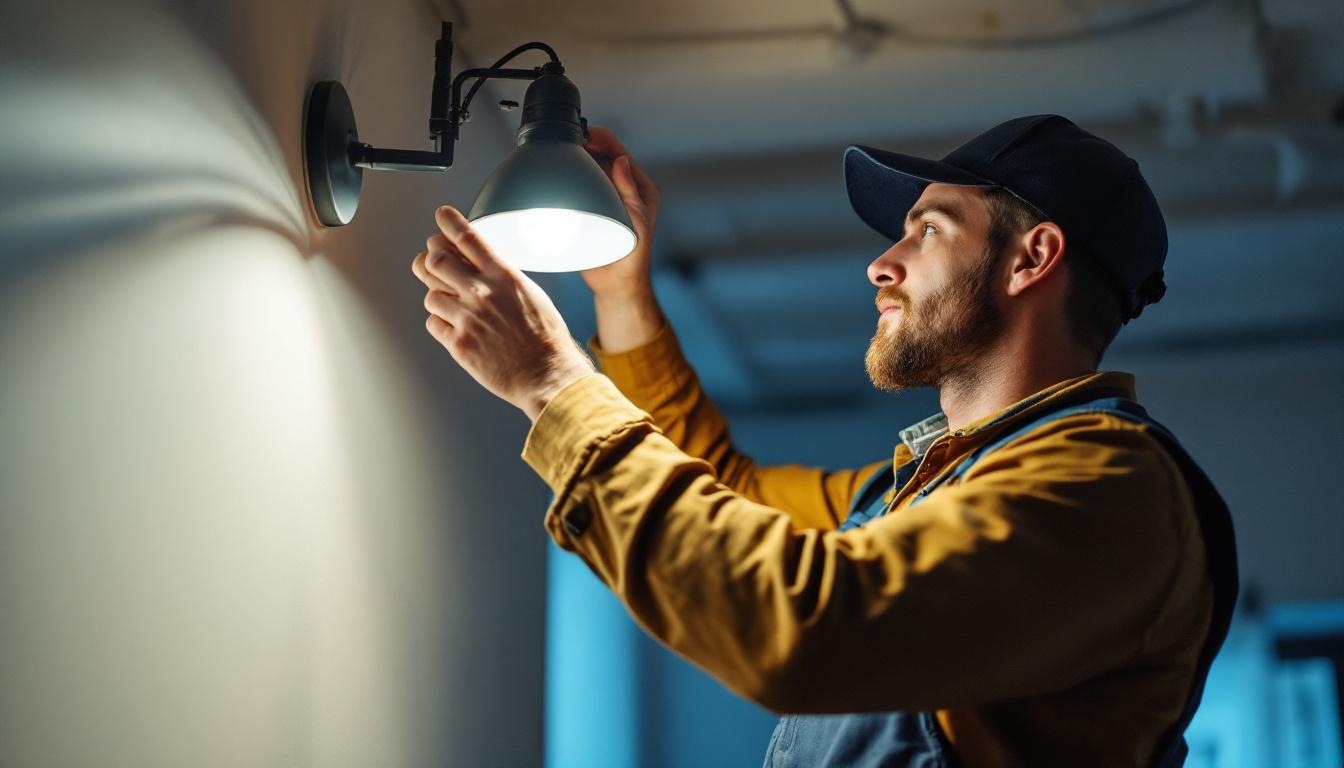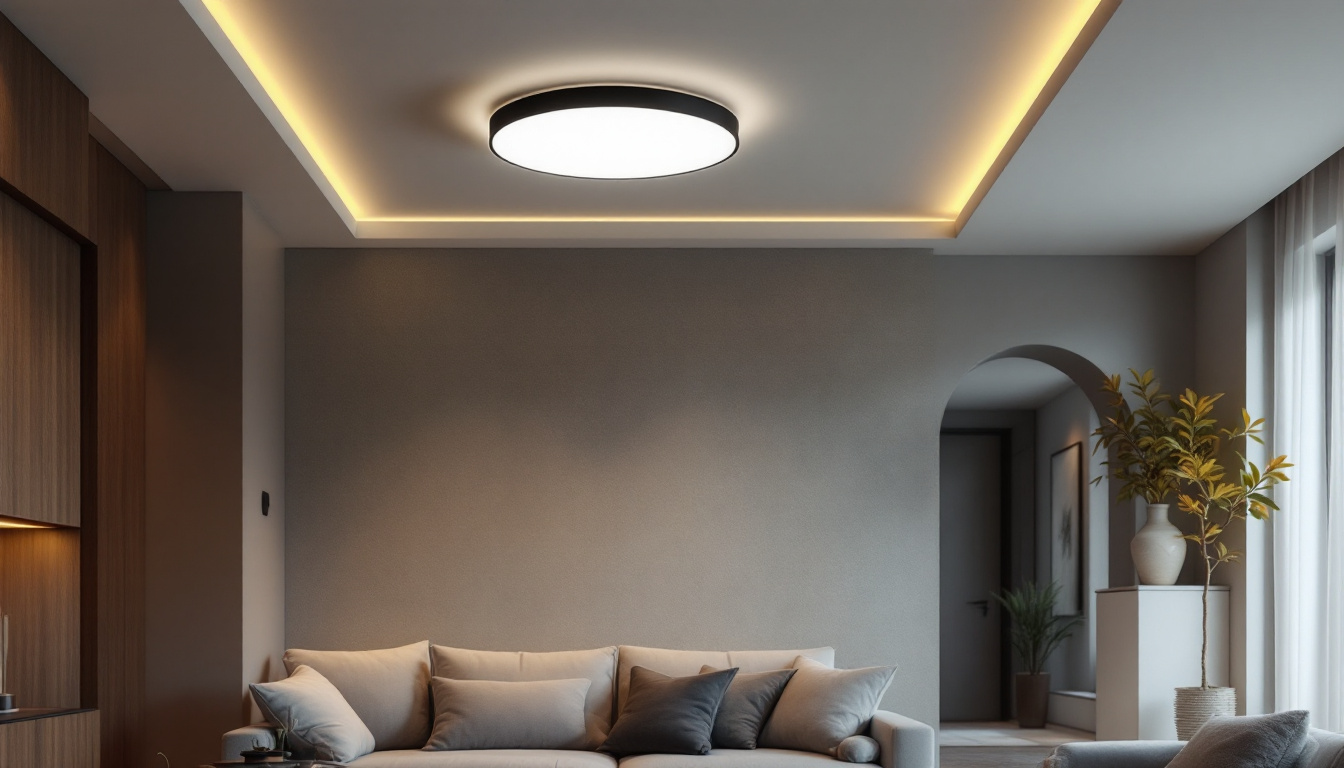
Fluorescent bulbs have long been a staple in the world of lighting, offering energy efficiency and versatility for various applications. For lighting contractors, understanding the nuances of these bulbs is crucial for providing optimal solutions to clients. This article addresses four common questions that contractors frequently encounter regarding fluorescent bulbs, helping to clarify their features, benefits, and installation considerations.
Fluorescent bulbs come in several types, each designed for specific applications and environments. Understanding these variations can help contractors recommend the best option for their clients.
Standard fluorescent tubes are the most recognizable form of fluorescent lighting. They are available in various lengths and diameters, with T8 and T12 being the most common sizes. These tubes are often used in commercial settings, such as offices and retail spaces, due to their efficiency and broad light distribution. Additionally, they can be found in different color temperatures, ranging from warm white to cool daylight, allowing for customization based on the ambiance desired in a particular space. The versatility of standard tubes makes them suitable for both general lighting and task lighting, enhancing productivity in work environments.
CFLs are smaller versions of fluorescent bulbs, designed to fit standard light sockets. They are an excellent choice for residential applications, as they provide energy savings compared to traditional incandescent bulbs. CFLs come in various shapes and sizes, including spiral and globe designs, making them versatile for different fixtures. Moreover, these bulbs have a longer lifespan, often lasting up to ten times longer than incandescent bulbs, which translates to less frequent replacements and reduced waste. Their ability to produce a warm light similar to that of traditional bulbs has made them a popular choice among homeowners looking to balance energy efficiency with comfort.
HID fluorescent bulbs are designed for high-output applications, such as warehouses and large retail spaces. These bulbs produce a brighter light and are more efficient than standard fluorescent tubes. They are often used in environments where high light levels are necessary for safety and productivity. In addition to their brightness, HID bulbs have a longer reach, making them ideal for illuminating expansive areas without the need for excessive fixtures. The technology behind HID bulbs also allows for quicker start-up times and reduced flickering, which can be particularly beneficial in high-traffic commercial settings where consistent lighting is crucial for operations.
Fluorescent bulbs offer several advantages that make them an attractive choice for both contractors and clients. Understanding these benefits can help contractors effectively communicate the value of fluorescent lighting.
One of the most significant advantages of fluorescent bulbs is their energy efficiency. They consume less electricity than incandescent bulbs, which can lead to substantial savings on energy bills. This efficiency is especially beneficial for commercial spaces that require extensive lighting. In fact, using fluorescent lighting can reduce energy consumption by up to 75% compared to traditional bulbs, making it a sustainable choice that aligns with green building practices and energy conservation efforts.
Fluorescent bulbs have a longer lifespan compared to traditional incandescent bulbs. While an incandescent bulb may last around 1,000 hours, fluorescent bulbs can last anywhere from 7,000 to 15,000 hours, depending on the type and usage. This longevity reduces the frequency of replacements, saving time and maintenance costs for contractors and clients alike. Additionally, the extended life of fluorescent bulbs means fewer bulbs end up in landfills, contributing to a more environmentally friendly approach to lighting.
Fluorescent bulbs are available in a range of color temperatures, allowing contractors to choose the right ambiance for different settings. From warm white to cool daylight, these options can enhance the aesthetic appeal of a space and improve functionality. For instance, cooler temperatures are often preferred in work environments, while warmer tones may be more suitable for residential applications. Furthermore, the availability of specialty fluorescent bulbs, such as those designed for specific tasks like color matching in art studios or high-CRI (Color Rendering Index) bulbs for retail displays, allows for tailored lighting solutions that meet diverse client needs.
Another advantage of fluorescent bulbs is their reduced heat emission compared to incandescent bulbs. Incandescent bulbs convert a significant portion of energy into heat rather than light, which can lead to increased cooling costs in warmer months. In contrast, fluorescent bulbs emit far less heat, making them a more comfortable option for both residential and commercial environments. This characteristic is particularly beneficial in spaces where temperature control is crucial, such as offices, schools, and hospitals, as it helps maintain a more stable and pleasant atmosphere for occupants.
With the rise of LED technology, many contractors find themselves comparing fluorescent bulbs to LED alternatives. Understanding the differences can help contractors make informed recommendations to their clients.
Fluorescent bulbs typically have a lower initial purchase price compared to LEDs. However, when considering long-term savings, LEDs tend to outshine fluorescent options. LEDs consume even less energy and have a significantly longer lifespan, which can result in lower overall costs over time. For instance, while a fluorescent bulb may last around 10,000 hours, an LED can last up to 25,000 hours or more. This longevity not only reduces the frequency of replacements but also minimizes maintenance costs, making LEDs a more economical choice in the long run.
While both fluorescent and LED bulbs can produce quality light, the characteristics differ. LEDs often provide superior color rendering, which is essential in settings such as retail and art galleries. Fluorescent bulbs may sometimes produce a flickering effect, especially as they age, which can be a concern in environments requiring consistent lighting. Additionally, LEDs offer a wider range of color temperatures, allowing for more versatility in design and ambiance. From warm, inviting tones to cool, energizing light, the ability to customize lighting can enhance the aesthetic appeal of a space, making it more inviting for customers and clients alike.
Fluorescent bulbs contain small amounts of mercury, which poses environmental concerns if not disposed of properly. In contrast, LEDs are free from hazardous materials, making them a more environmentally friendly option. Contractors should be aware of local regulations regarding the disposal of fluorescent bulbs to ensure compliance and promote sustainability. Moreover, the energy efficiency of LEDs contributes to a reduced carbon footprint, as they require less electricity to operate. This shift towards energy-efficient lighting not only benefits the environment but can also enhance a contractor’s reputation as a responsible and forward-thinking professional in the industry.
Another factor to consider in the comparison between fluorescent bulbs and LEDs is heat emission. Fluorescent bulbs tend to emit more heat than their LED counterparts, which can contribute to increased cooling costs in a space, particularly in warmer climates or during summer months. LEDs, on the other hand, convert a higher percentage of energy into light rather than heat, making them a cooler option. This characteristic can be particularly advantageous in commercial settings where maintaining a comfortable temperature is crucial for both employees and customers, ultimately leading to a more pleasant environment.
Durability is another significant aspect where LEDs have an edge over fluorescent bulbs. LEDs are more resistant to shock, vibrations, and temperature fluctuations, making them suitable for a variety of applications, including outdoor and industrial settings. Fluorescent bulbs, being more fragile and sensitive to extreme temperatures, may not perform as reliably in challenging environments. This resilience of LEDs can lead to fewer outages and interruptions, ensuring that spaces remain well-lit and functional, which is particularly important in critical areas such as hospitals and emergency services.
While fluorescent bulbs are relatively easy to install, there are common challenges that contractors may encounter during the process. Being aware of these issues can help streamline installations and enhance client satisfaction.
Fluorescent bulbs require a ballast to regulate the electrical current. One common challenge is ensuring that the ballast is compatible with the specific bulb being installed. Contractors should verify the ballast type and wattage to avoid flickering or failure of the bulb. Additionally, older ballasts may need replacement to accommodate newer, more energy-efficient bulbs.
Not all fixtures are designed to accommodate fluorescent bulbs, particularly when it comes to size and shape. Contractors must ensure that the selected bulb fits the fixture properly to avoid issues such as overheating or inadequate light output. This consideration is especially important in retrofitting projects, where existing fixtures may not be compatible with modern fluorescent options.
Fluorescent bulbs can be sensitive to temperature and humidity levels. In extreme conditions, such as very cold or damp environments, the performance of fluorescent bulbs may be compromised. Contractors should assess the installation location to determine if special considerations, such as using cold-weather-rated bulbs, are necessary to ensure optimal performance.
Fluorescent bulbs remain a popular choice for various lighting applications, thanks to their energy efficiency and versatility. By addressing common questions and concerns, lighting contractors can better serve their clients and make informed decisions regarding fluorescent lighting solutions. Understanding the different types of fluorescent bulbs, their advantages, comparisons with LED options, and installation challenges will empower contractors to provide expert guidance and enhance their service offerings.
As the lighting industry continues to evolve, staying informed about the latest advancements in fluorescent technology and best practices will ensure that contractors can meet the diverse needs of their clients effectively. Embracing knowledge about fluorescent bulbs not only enhances a contractor’s credibility but also fosters long-term relationships with clients seeking reliable lighting solutions.
Ready to elevate your lighting projects with high-quality fluorescent bulbs? Look no further than LumenWholesale, where we offer an extensive selection of spec-grade lighting products at unbeatable wholesale prices. Say goodbye to local distributor markups and hello to superior lighting that meets the highest industry standards. With LumenWholesale, you can enjoy the convenience of bulk buying with free shipping, ensuring you get the best value without any hidden fees. Make your next project shine with reliable, high-performance lighting by choosing Wholesale Lighting at the Best Value from LumenWholesale.

Illuminate your outdoor spaces with ease using expert tips from lighting contractors.

Discover expert tips and best practices for installing pendant ceiling lights from seasoned lighting contractors.

Discover the insider tips and industry secrets from top lighting contractors in “High Watt: Lighting Contractors’ Secrets to Master.” Unveil the art of perfect illumination, learn how to enhance ambiance, and explore innovative lighting solutions that can transform any space into a visual masterpiece..

Discover how modern flush mount LED ceiling lights are revolutionizing lighting design and installation.